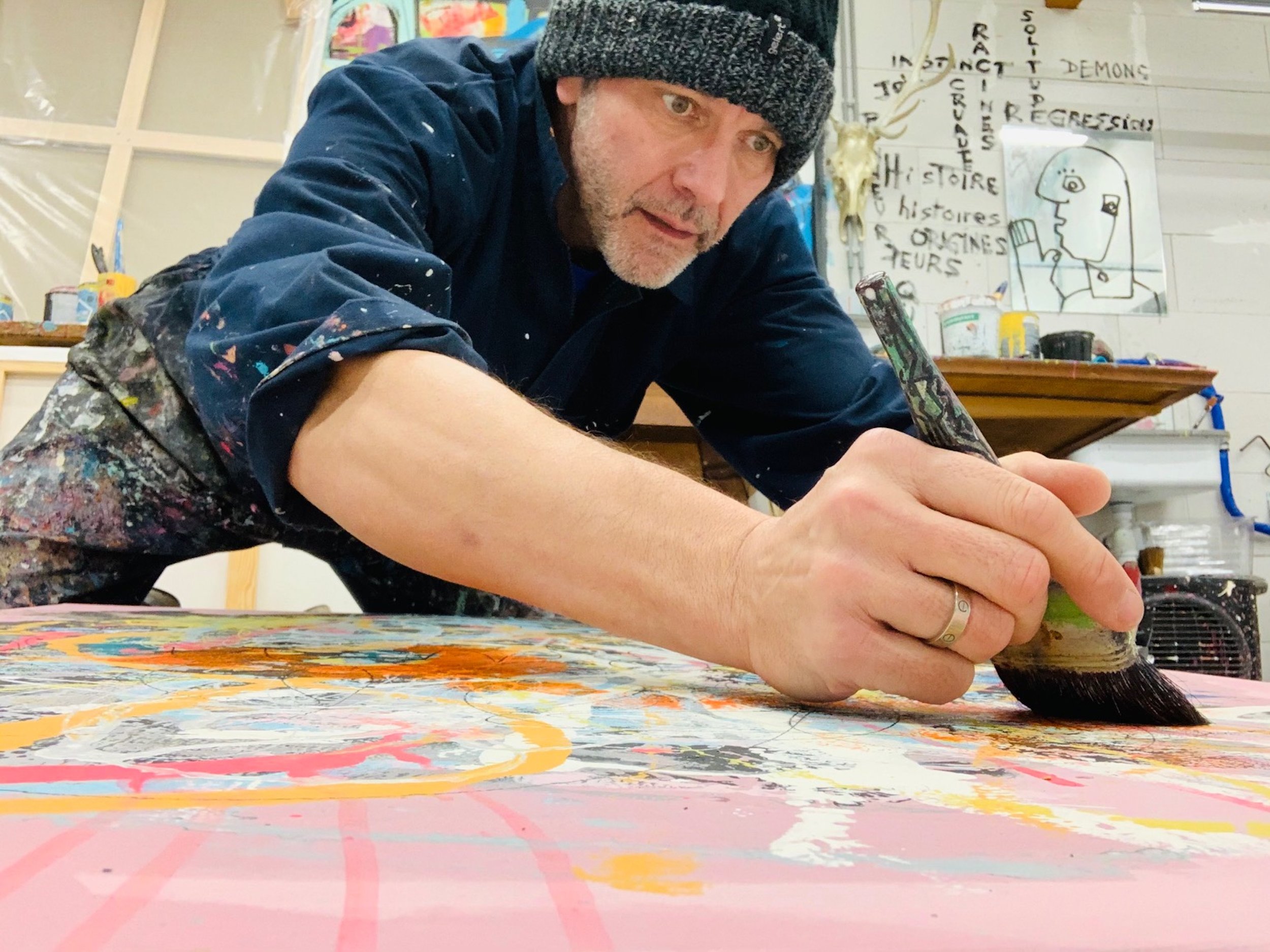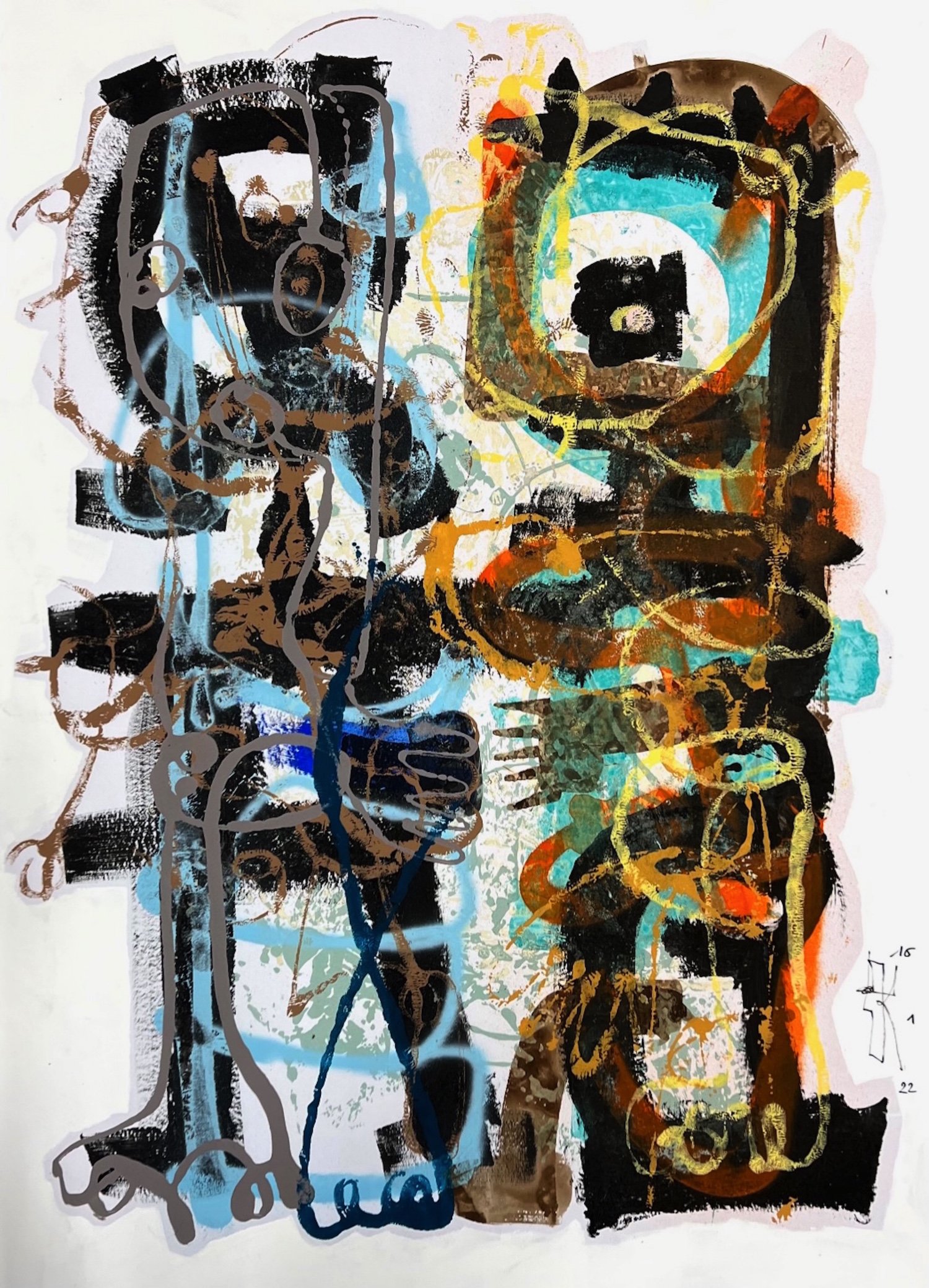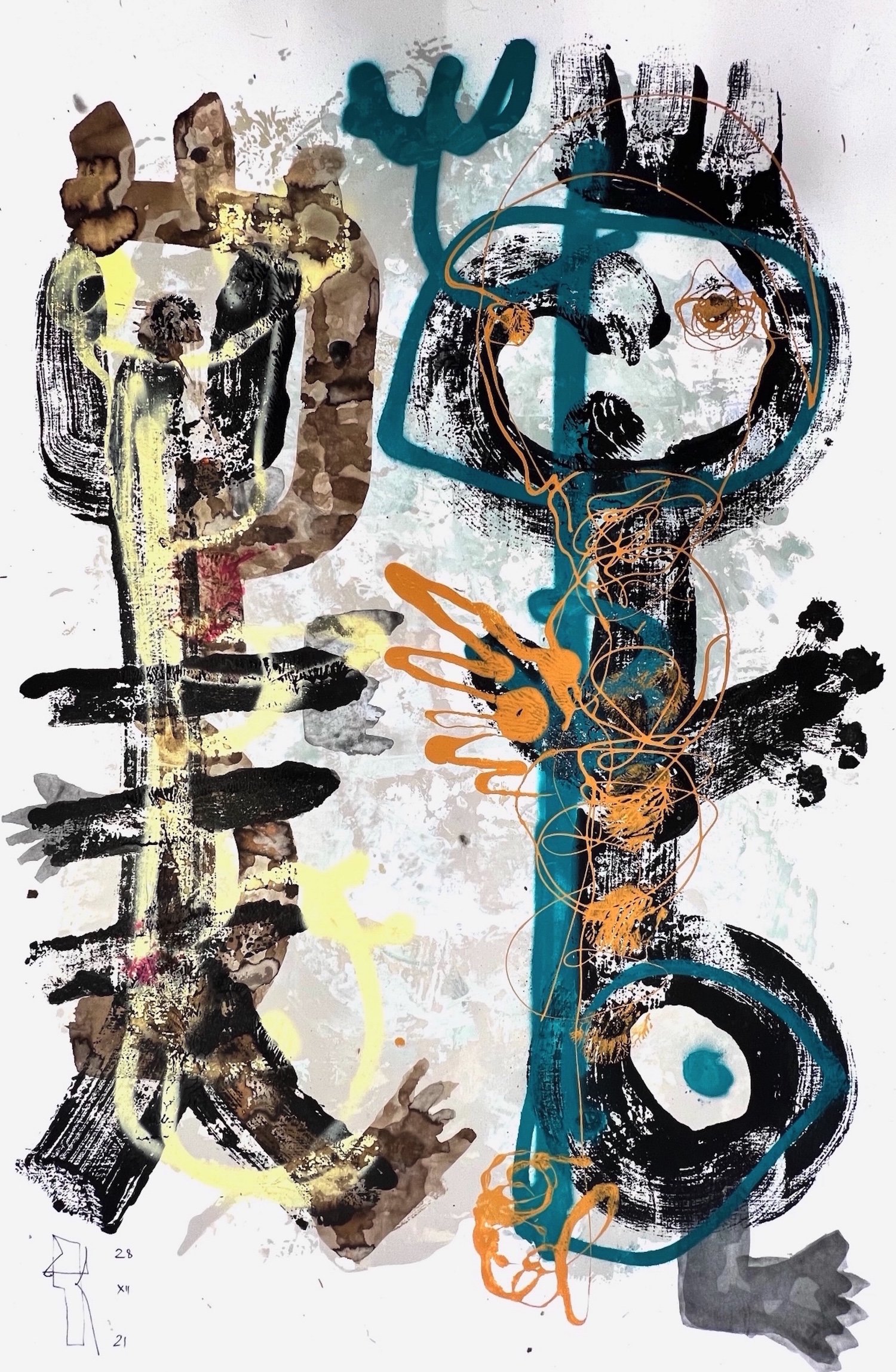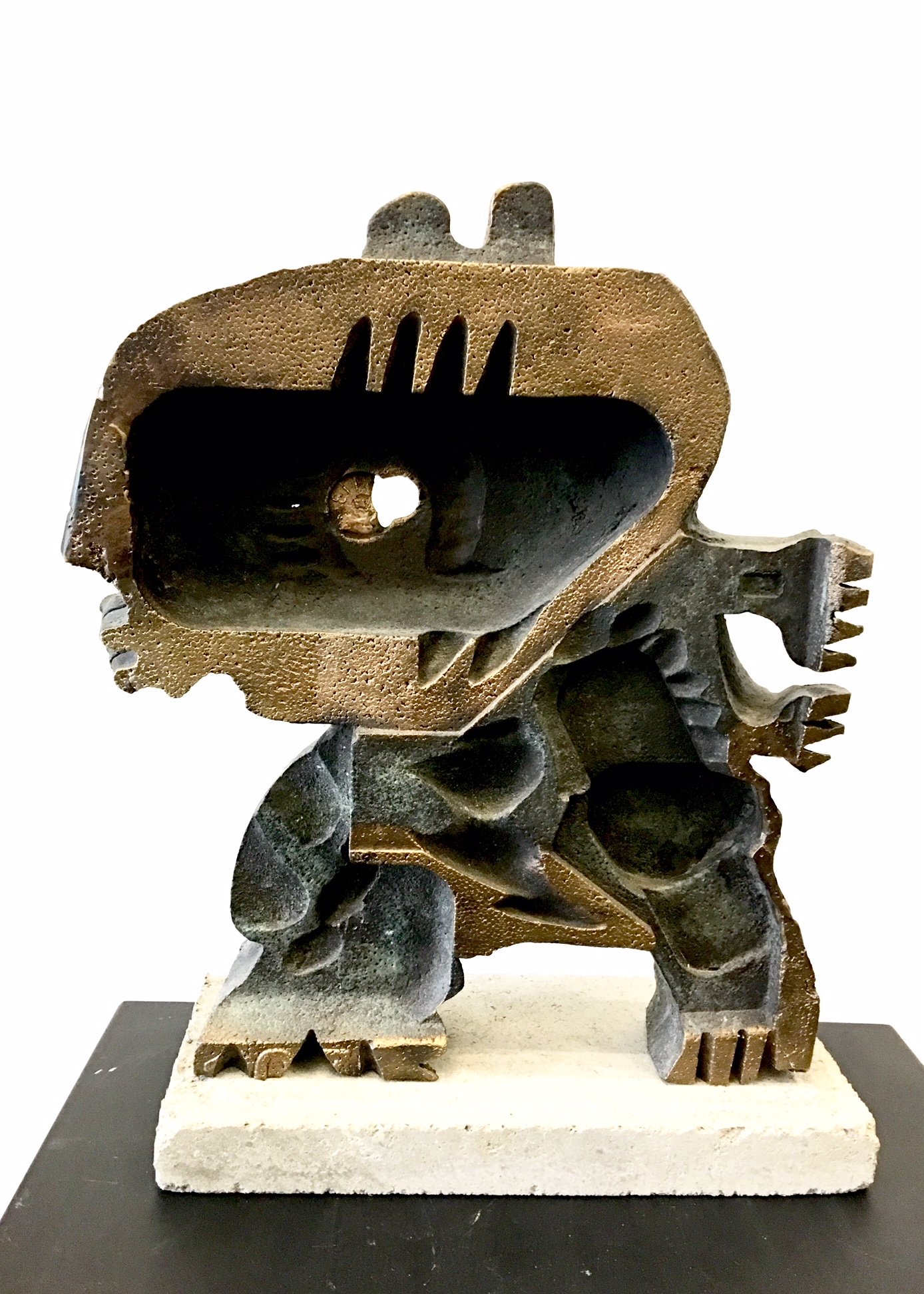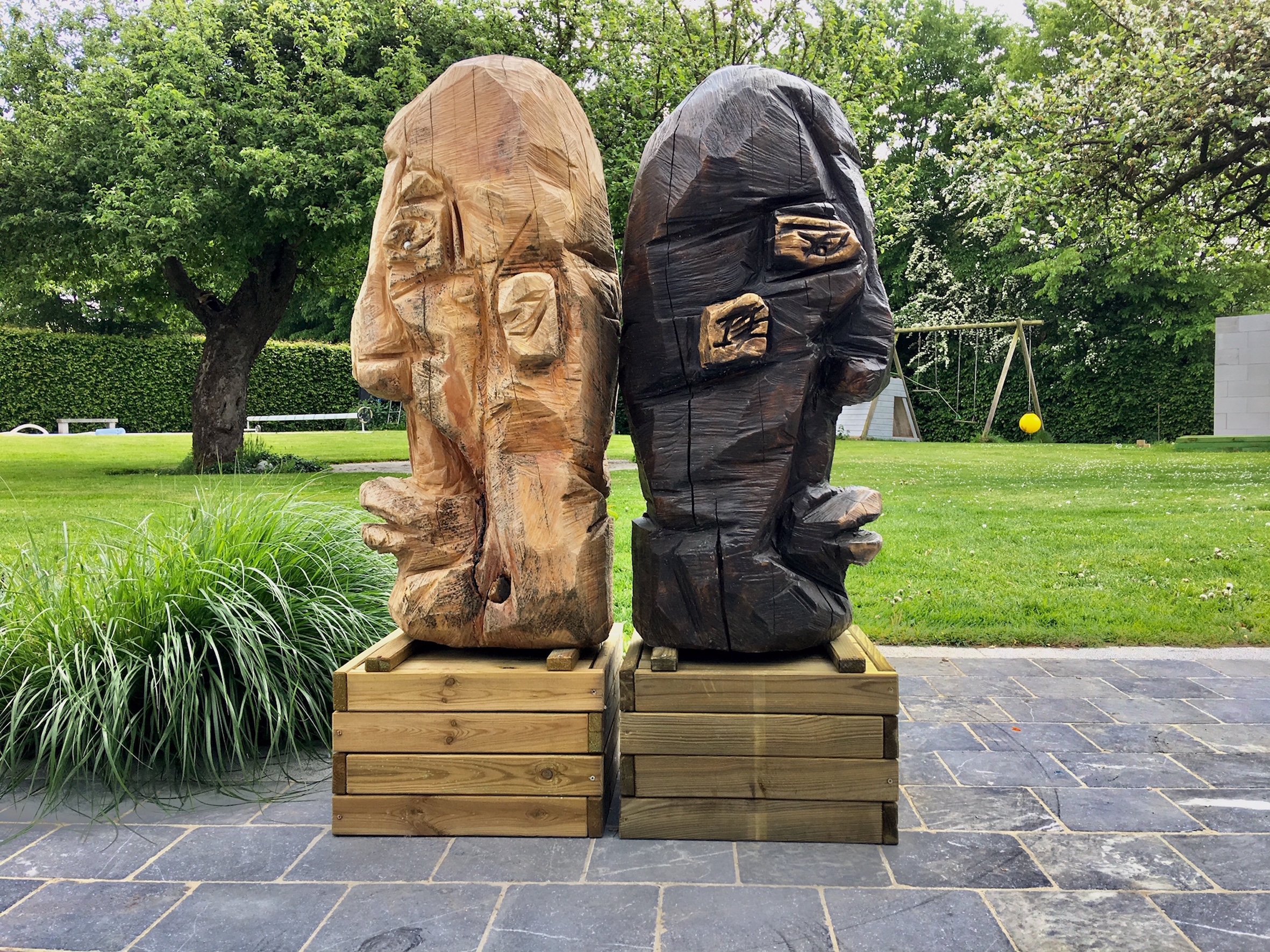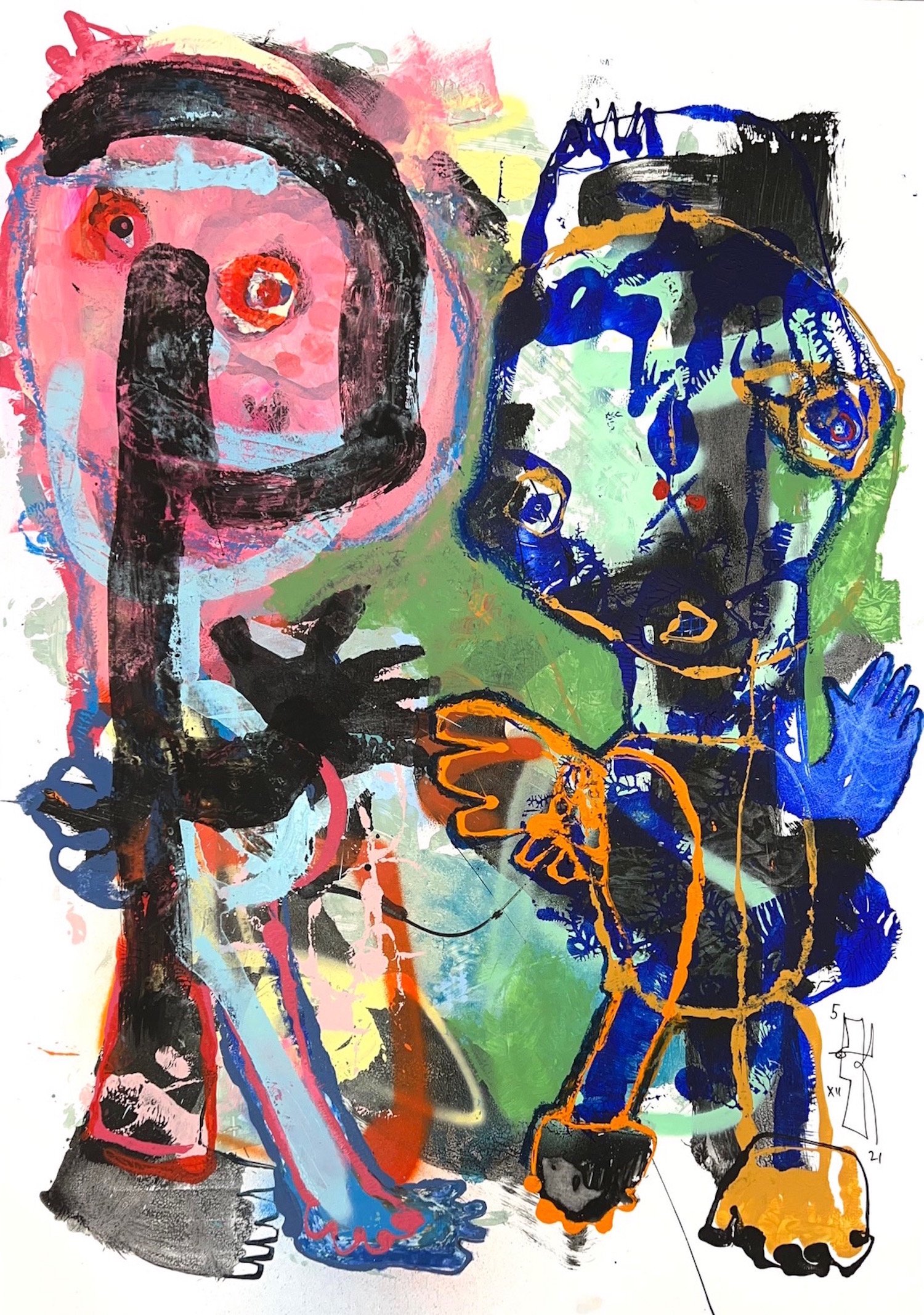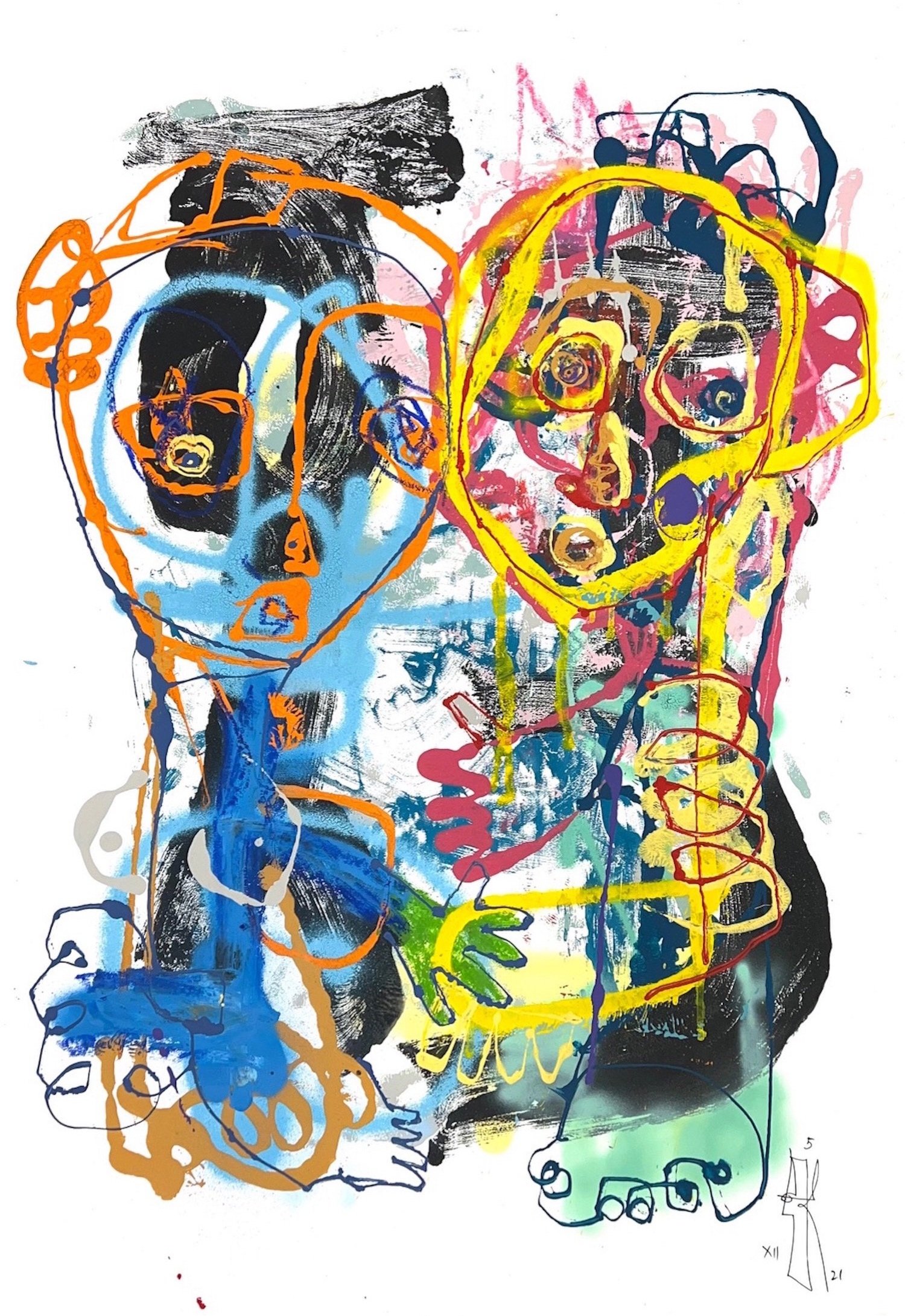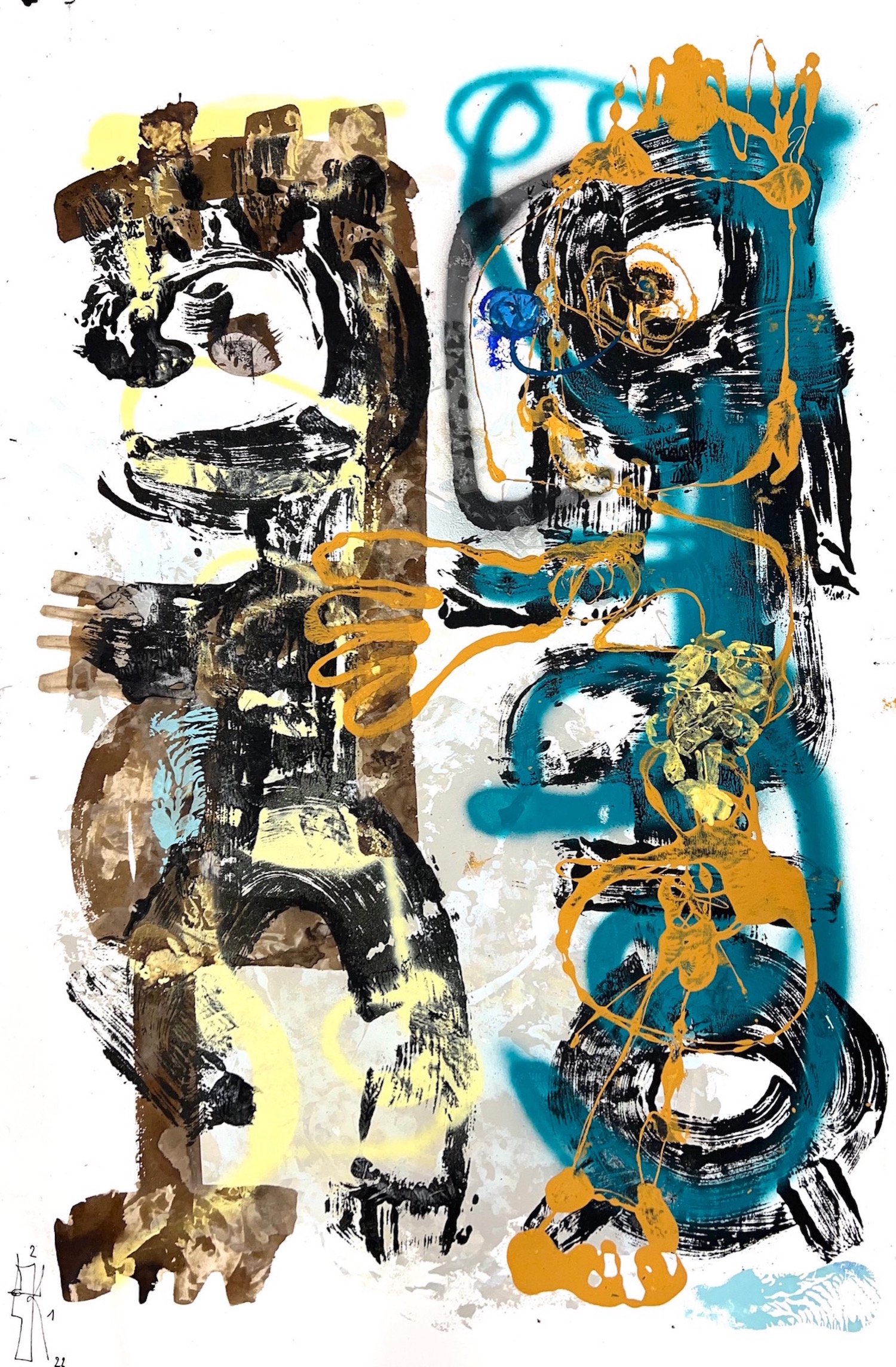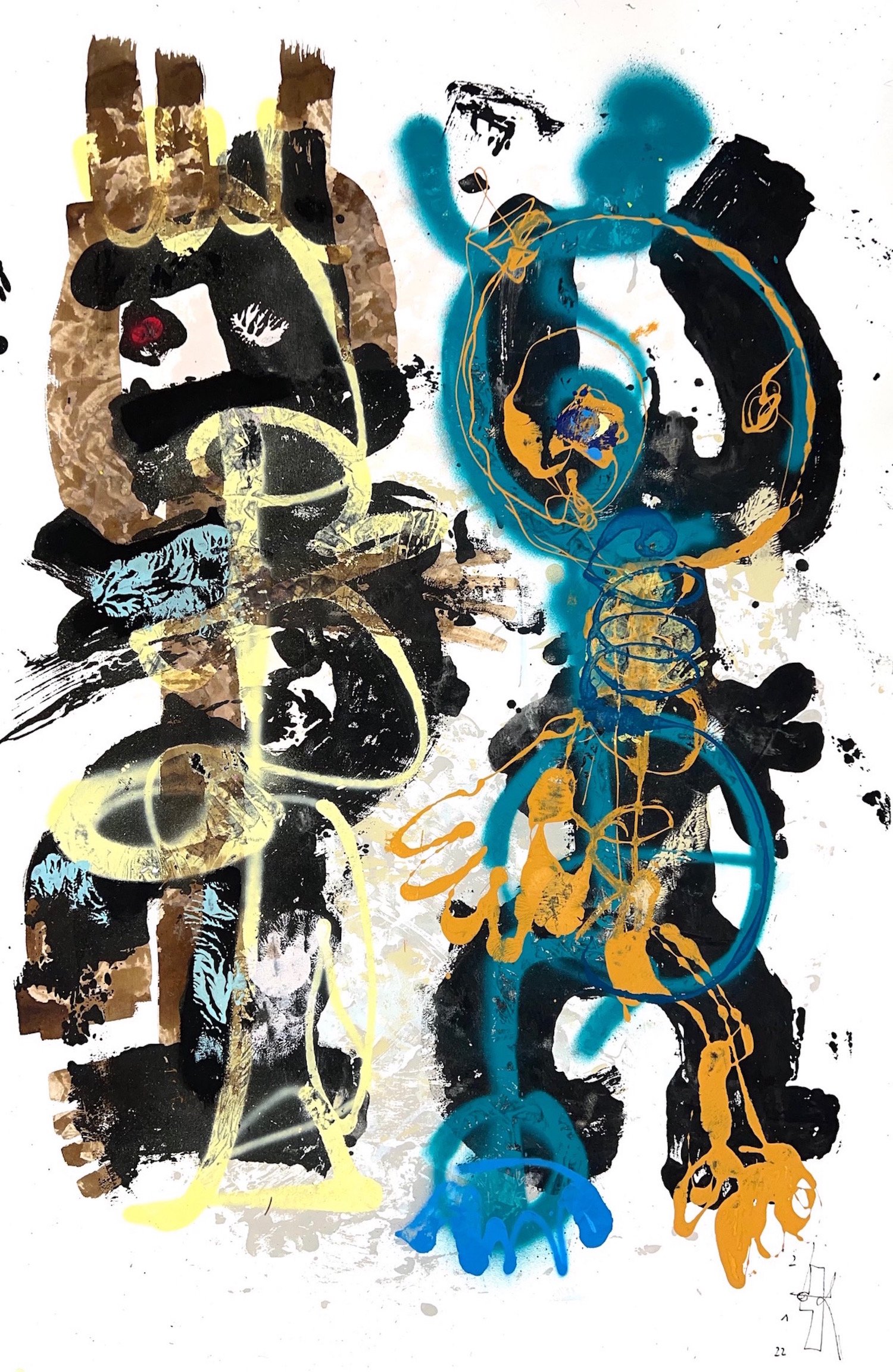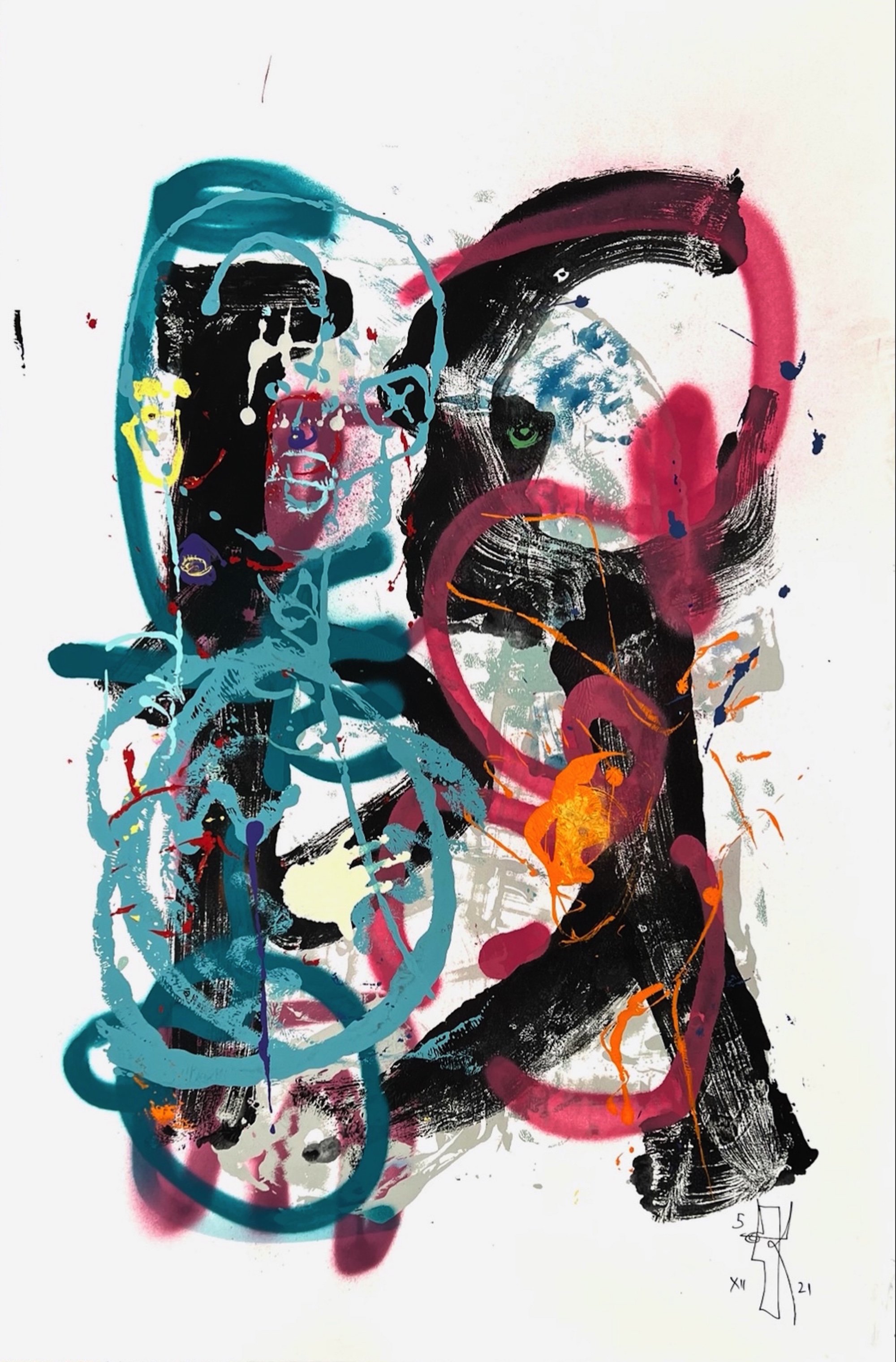Interview
Christian Dugardeyn
Christian Dugardeyn, a.k.a Duga was born in Brussels. As a child, he was attracted to pictorial art.
Duga enrolled at the Academy of Fine Arts in Brussels while specializing in medical imaging, waiting to graduate with a pocket medical degree.
Duga’s expression is spontaneous, energetic and vital. He gives vent to his emotions through various techniques, but drawing, painting and sculpture remain his favorite mediums. He uses the solid line as one way of expressing his primitive emotions, disregarding reality. This line is used to tell a story by letting it run free across the surface of the canvas or paper. He uses a succession of arabesques, lines or swirling lines, spontaneous, urgent, as if life was hanging by a thread.
Over time, he experimented with many other paths, where spontaneity and instinct remain the main objectives of his artistic approach. Duga is mainly a figurative painter but by dint of deforming his subjects (because he believes that it is by deforming that we get closer to the truth), he went through a 2-year abstraction phase (during the Covid pandemic) to better return recently to a form of figuration, strongly impregnated with abstraction.
Duga is constantly questioning the human being. This provides the opportunity for endless work, because he knows that his questions will remain forever unanswered. Man is interesting — his inner life, sufferings, joys, sorrows, his inconsistencies, fears, loneliness, demons and his social life. Duga is constantly searching, ready to explore every path, every branch of this world, looking for the smallest element that can help him understand a little more about the human.
What is your background and how did you start your journey in the art world?
“My name is Christian Dugardeyn, aka Duga. As a child, I drew and painted, using everything that I could find.
Towards the end of high school, I could not decide whether to pursue medicine or fine arts. Having won prizes in chemistry, physics and biology from several schools in Brussels, I was encouraged by my teachers to study medicine. I enrolled at the Beaux-Arts in Brussels and specialized in medical imaging, with the aim of becoming a radiologist. I studied medicine while also enjoying my art. Since then, I’ve continued to divide my time between the art of medicine and pictorial art.
To express myself completely on an artistic level, I had to emancipate myself from the artistic techniques that I had learned. I first practiced drawing and painting on various supports: paper, canvas, aluminum and plexi. Then, I went on to practice wood and bronze sculpture.
I started exhibiting my work at art fairs, then managed to do a few solo exhibitions. I’m now at the point of exhibiting in galleries and on online sites.”
What inspires you?
“Primitive arts, African art, Oceanic art, expressionist American art, art brut and children's art have had a strong impact on me. I find my roots there.
Exhibitions by Dubuffet and Chaissac were a shock and great revelation for me. They transmitted what is still for me today one of the basic principles of my artistic approach: spontaneity and instinct.
The writings and graffiti of Street Art interest me in the fluidity and speed of the gesture, as well as by the explosion of colors. Everything is possible. Free figuration taught me to experiment; to always leave the field of possibilities open.”
“Life is not a straight line, but a world to discover, a lost line — tortuous, multidirectional, energetic, curious, inexhaustible.”
What themes do you pursue? Is there an underlying message in your work?
“The recurring theme of my work is man — his joys, happiness, sadness, fears, loneliness, his demons, cruelty, passions, inconsistencies and contradictions. His history and his little stories. I am perpetually asking questions about the human being.
There is no message in my works, just a representation of human life and associated emotions. I simply hope that the spectator will be able to see my works as mirrors — their own mirror — and that they will interpret it according to their story. But also see the work as mirrors of our humanity, of our memory, of our vanities and of our quirks.”
How would you describe your work?
“I’m a painter and sculptor of free expression and emotion. I place myself in an art apart: in the late evolution of a mixture of conscious and assumed art brut, post-contemporary modern art, free figuration, figurative and abstract contemporary expressionism. In short, my work falls in any of these boxes, but I still feel very close to art brut, on the side of the common man, perhaps a little crazy.
For nearly 30 years, I practiced figurative art spontaneously and instinctively, starting all my paintings without ever knowing how they would end. It was very satisfying.
The incessant work, the experiments in various ways, the increasingly important deformation of the bodies will lead me despite myself, during the time of confinement, to discover abstraction. I already felt very free before and the range of experiences has widened even more.
I have recently turned to a new form of figuration between figuration and abstraction called ‘figurabstractif’.”
Which artists influence you most?
“Among contemporary artists, Basquiat, Combas and the free figuration movement, Aléchinsky, Appel and the Cobra group, Picasso, Schiele and expressionism, Dubuffet and Art Brut, Street Art, etc. have permeated my work.
With Picasso, Basquiat and in Street Art, it is the deformation of the characters that interest me, while keeping a certain anatomical fidelity and a gesture.”
“Art brut, associated with abstraction, brings up an inner life, a dialogue with myself; even new forms of regression which feed a renewed work.
By distorting things, by twisting reality, I find that we get closer to the truth of things.”
What is your creative process like?
“I don't have a particular creative process. I work on instinct. Very often, I go to my studio without a precise idea. I put on music, hang out in the studio tidying up, and look at old paintings. All this is done to extricate myself from my everyday life. I lay 1 or 2 canvases on the ground, and 2 to 3 sheets of paper. I then start, very often by accident, a line, a stain that leads to another. I attach great importance to provoked and repeated chance.
I very often create 3 or 4 works at the same time, horizontally on the ground. The work of each canvas influences the one next to it; each is impregnated with the other. Each piece is therefore part of a mini-series.
Trying to work freely and instinctively does not mean chaos. The raw approach, the instinctual expression on a canvas requires a set of constructions and an important work on the contrasts, the lights and the masses, where chance does not have a place. But accidents are strongly desired, and sometimes expected.”
What is an artist’s role in society and how do you see that evolving?
“We all have a role to play in our society. That of the artist can be varied. I fulfill my role if I manage to challenge the spectator, to bring out deep emotions, to make them wonder about themselves and society, to make them see things differently from their usual gaze. And also to make them dream, and experience joy and happiness.
This is the true role of the artist. A game of gaze, role, reflect.
Who are we? Where do we come from? Where are we going? Do we deserve what is happening to us? Being an artist also means being a craftsman and a poet at the same time. You have to combine the manual side with the philosophical and poetic side to create a new aesthetic ambition by searching, and experimenting in all directions.”
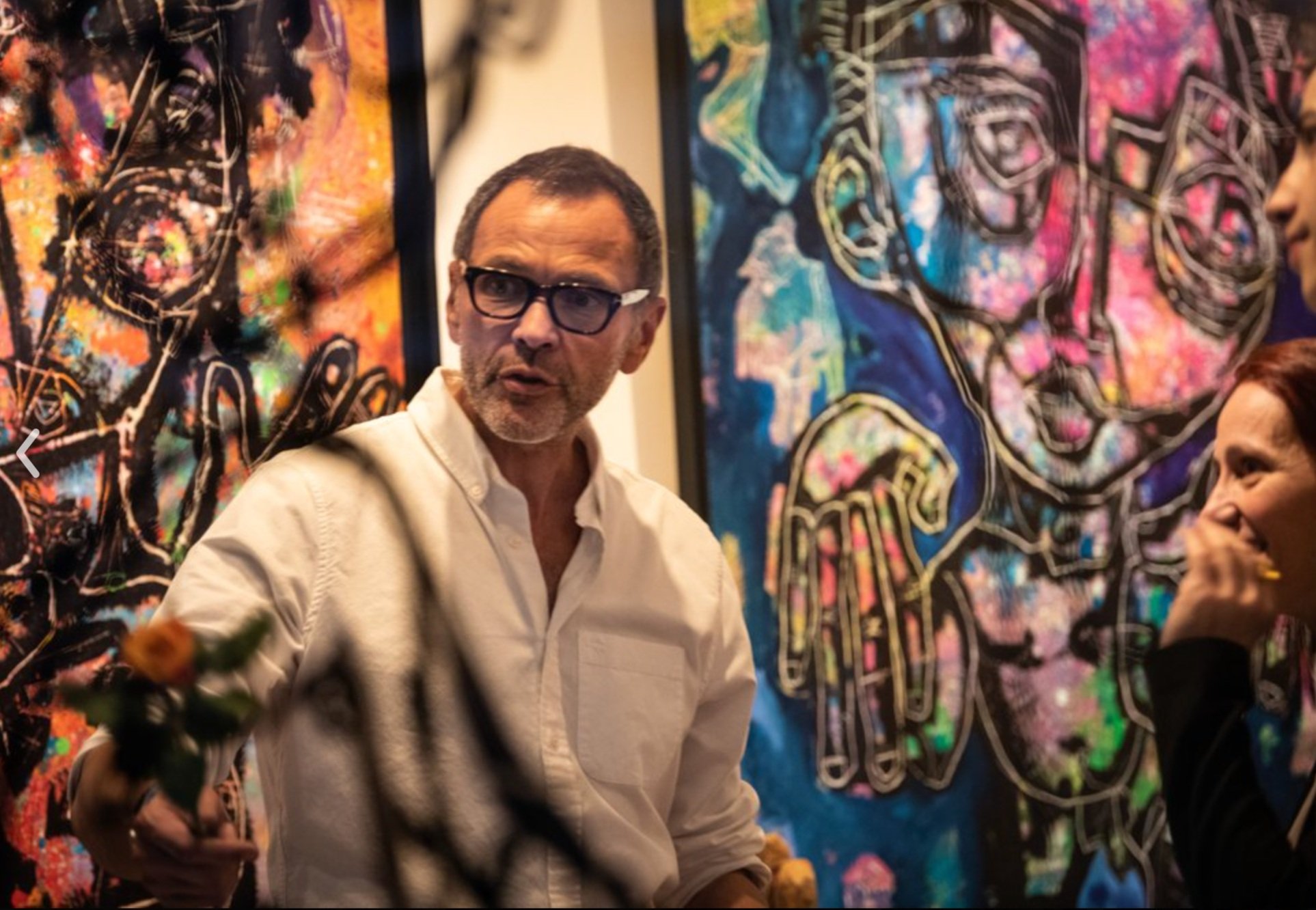
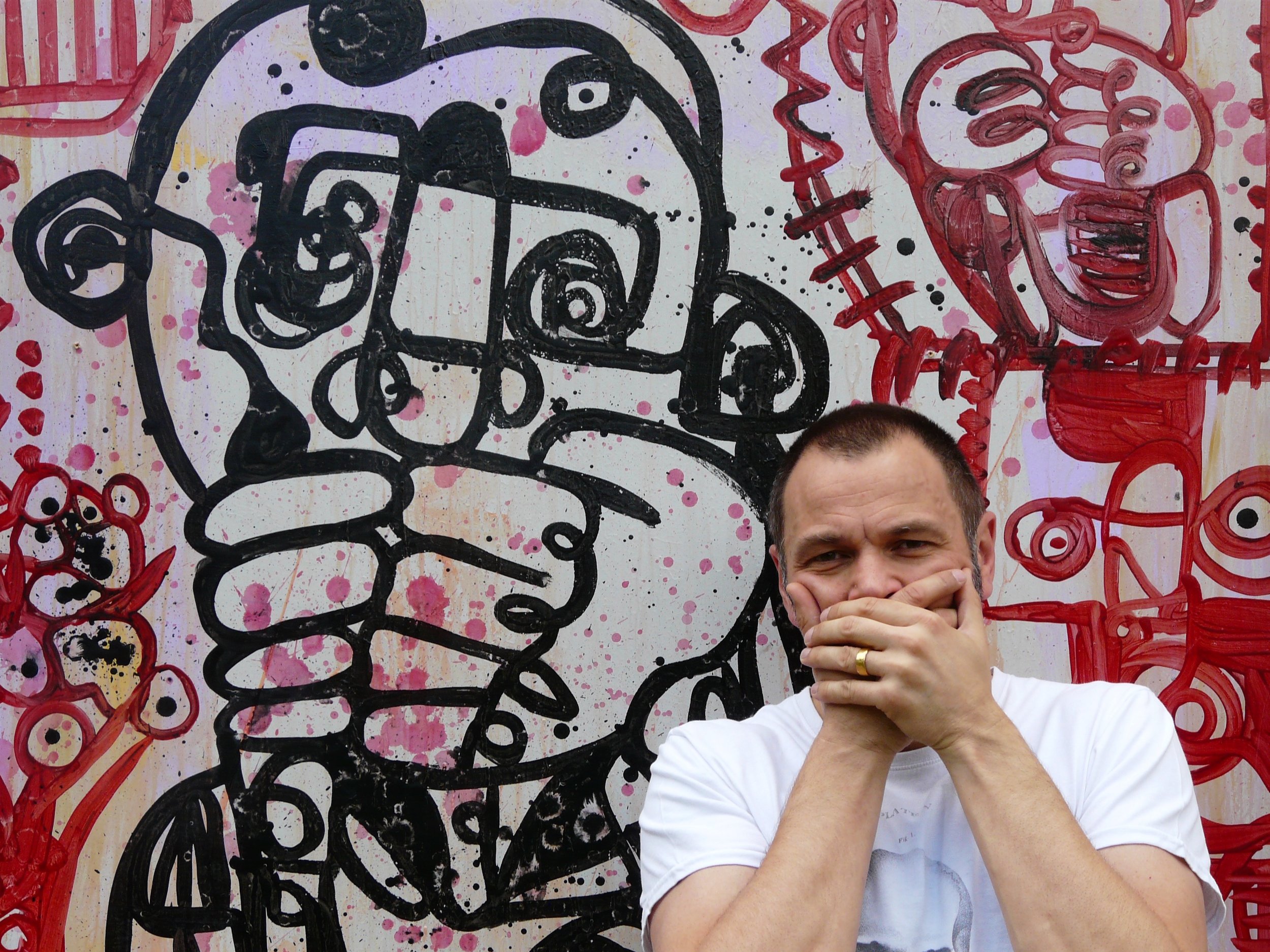
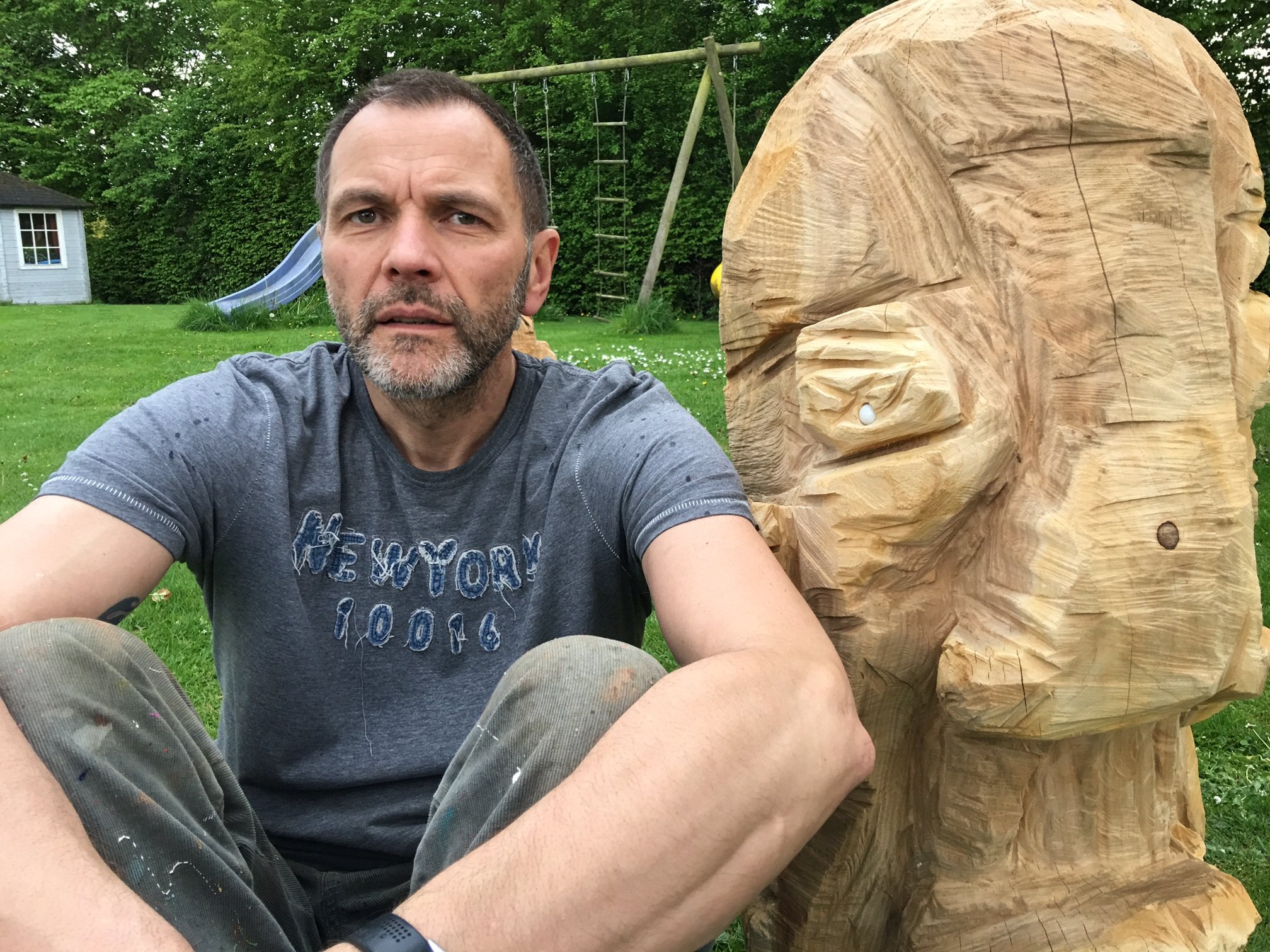
Have you had any noteworthy exhibitions you'd like to share?
“I have done many group exhibitions and a few solo ones. Two of them particularly stood out to me.
One was preceded by an event, a performance, a live creation in a continuous line of ink, totally instinctive. It was improvised on the window of the gallery, which is 2 meters high. There was a large audience in the gallery and street. The communication between me, the artist, and the spectators was intense.
The second, more recent, was a solo exhibition showing the pieces I’ve created over the past 5 years. This was held in a large exhibition hall. It allowed me to see the progress I have made, and to share this with a large audience, despite the confinement.”
Website: www.christiandugardeyn.com
Instagram: @duga_art

